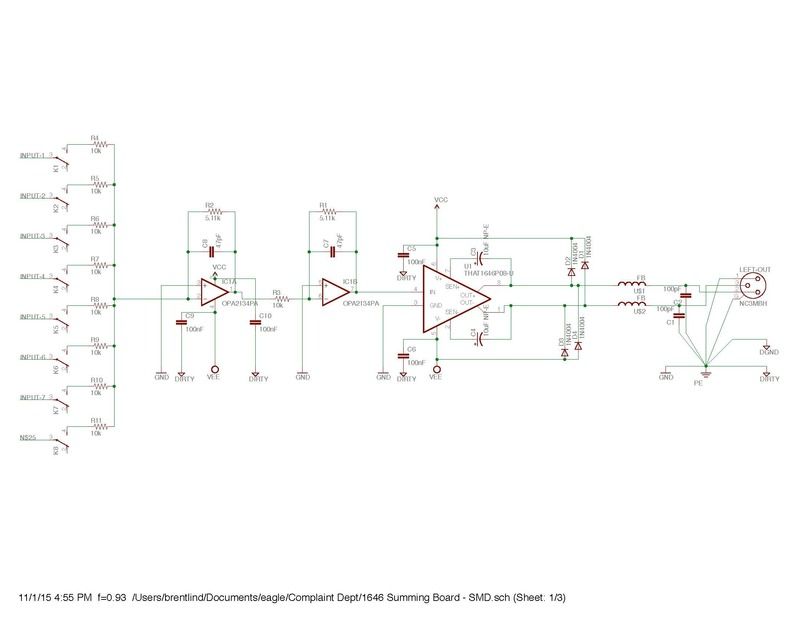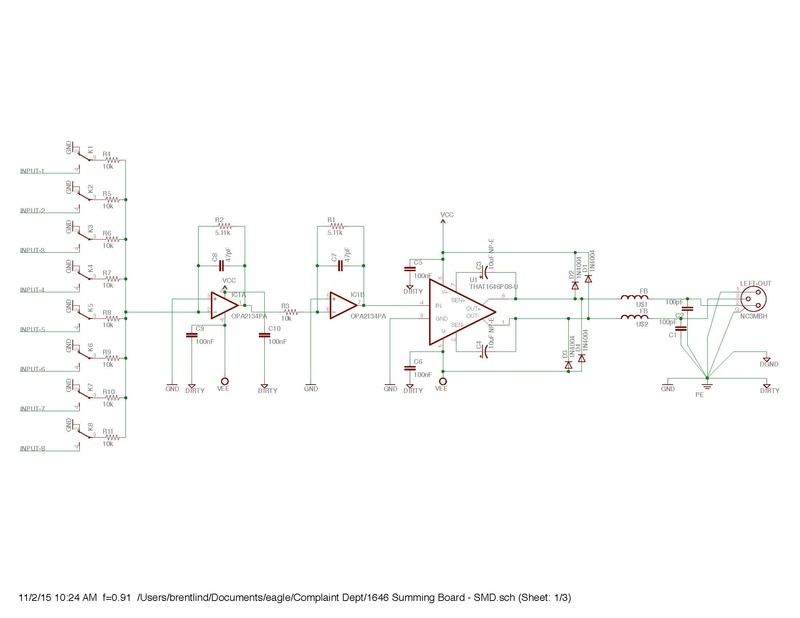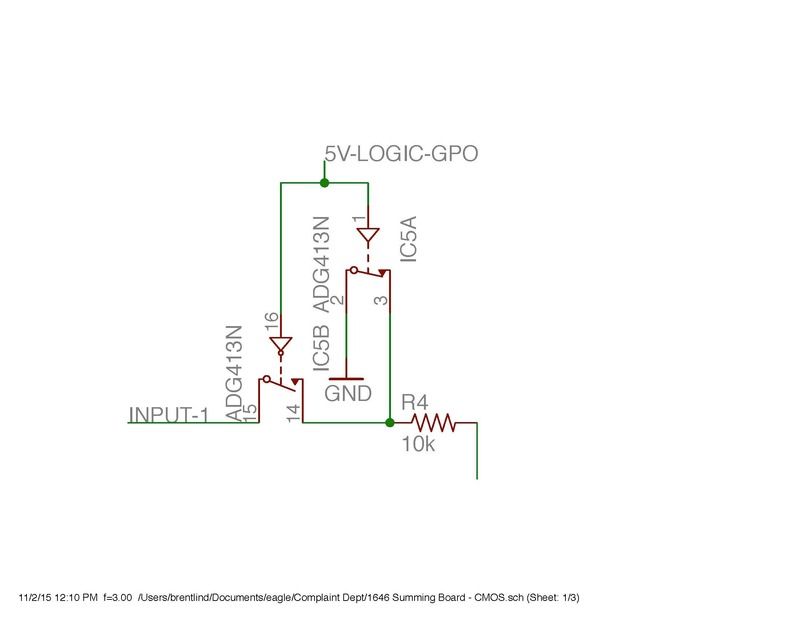Howdy,
I'm a newbie at the design side of audio, but I'm attempting to build a simple utility mixer for a specific use. Fidelity is not key here, this is essentially for routing band and crew talkbacks and such. That said, I would like to learn and make the best circuit I can for a reasonable cost. The schematic here is the bus switching (via relays) and output stage. The output stage is made of 2 consecutive OPA134's configured for a 3dB loss each, then to a 1646 balanced line driver. I've never really gone this deep into an audio design, so I'm looking for some feedback. Feel free to tell me I'm completely lost, or if I'm lucky maybe I just have a few adjustments to make. Any help is always much appreciated.
Notes
- most of the relay stuff I left off this schematic for simplicity, but its being driven by uC -> mcp23017 -> uln2803.
- The 10uF caps on the 1646 are BP, I just used that polarized symbol as it was the right size for the pcb.
- notation on the grounds is a little odd at the moment, but the idea was to take dirty, clean, and digital grounds to a star at the chassis
Thanks,
AdAstra
I'm a newbie at the design side of audio, but I'm attempting to build a simple utility mixer for a specific use. Fidelity is not key here, this is essentially for routing band and crew talkbacks and such. That said, I would like to learn and make the best circuit I can for a reasonable cost. The schematic here is the bus switching (via relays) and output stage. The output stage is made of 2 consecutive OPA134's configured for a 3dB loss each, then to a 1646 balanced line driver. I've never really gone this deep into an audio design, so I'm looking for some feedback. Feel free to tell me I'm completely lost, or if I'm lucky maybe I just have a few adjustments to make. Any help is always much appreciated.
Notes
- most of the relay stuff I left off this schematic for simplicity, but its being driven by uC -> mcp23017 -> uln2803.
- The 10uF caps on the 1646 are BP, I just used that polarized symbol as it was the right size for the pcb.
- notation on the grounds is a little odd at the moment, but the idea was to take dirty, clean, and digital grounds to a star at the chassis
Thanks,
AdAstra





